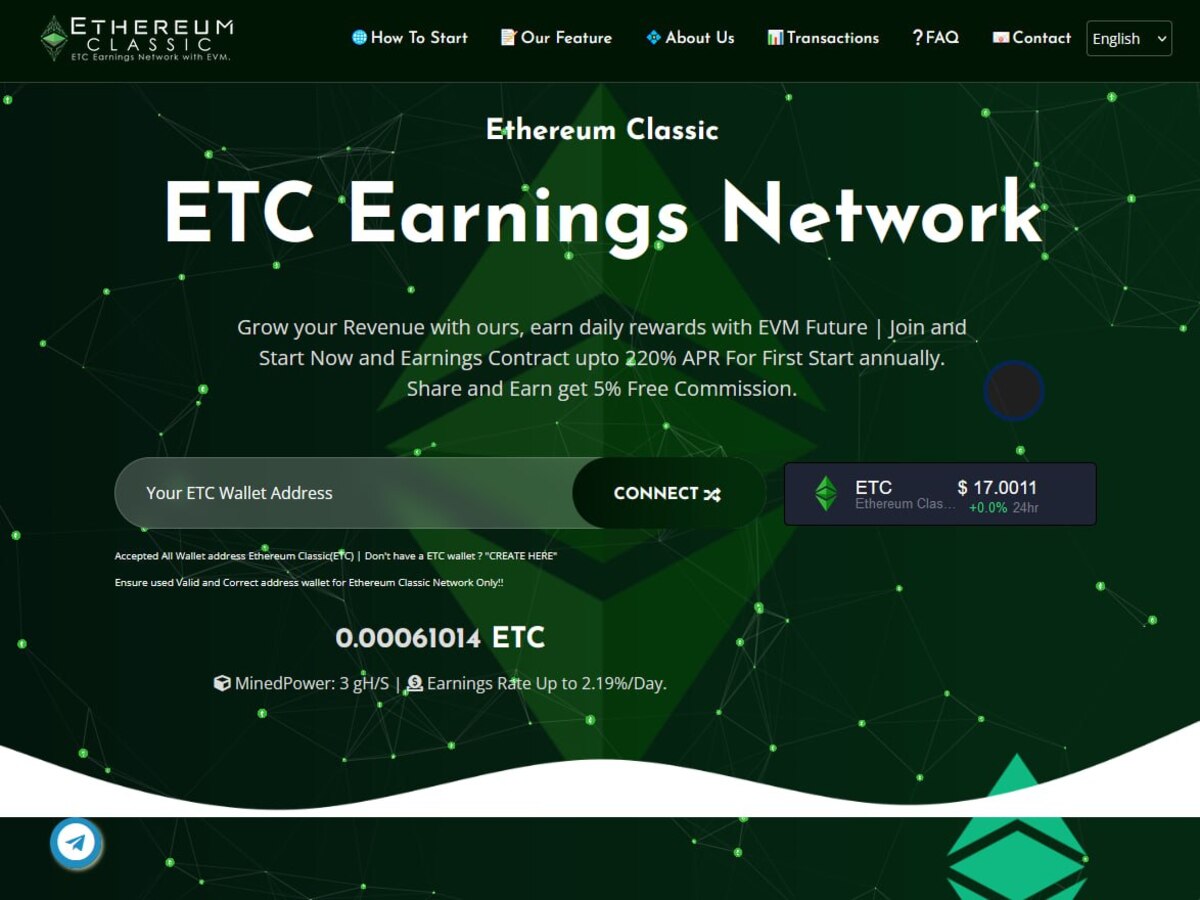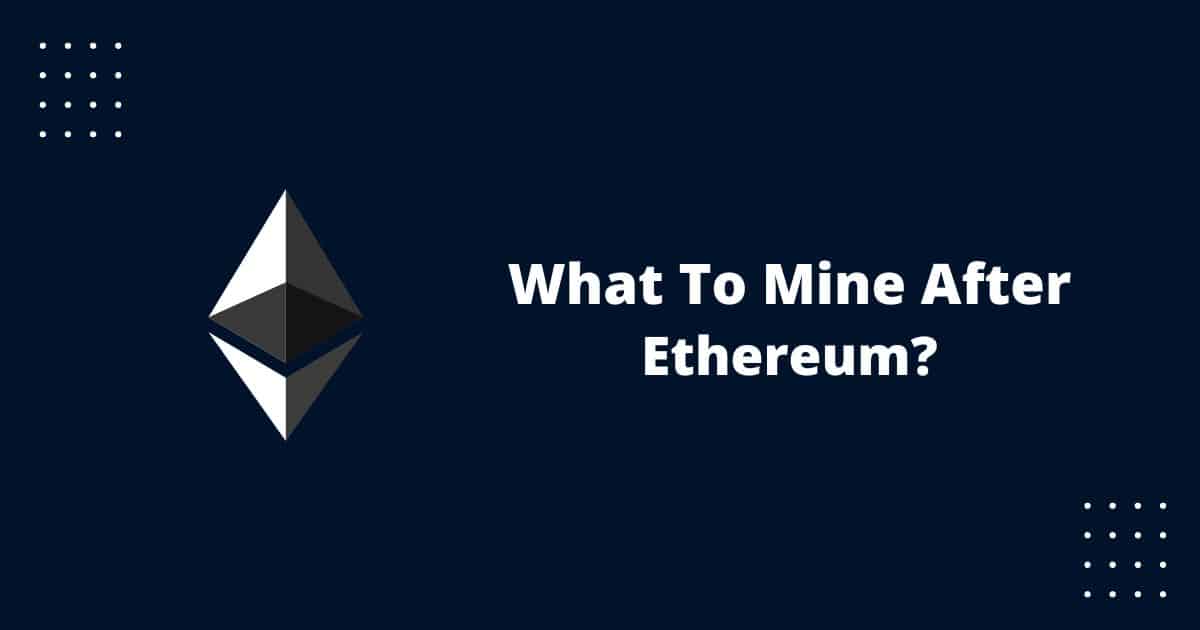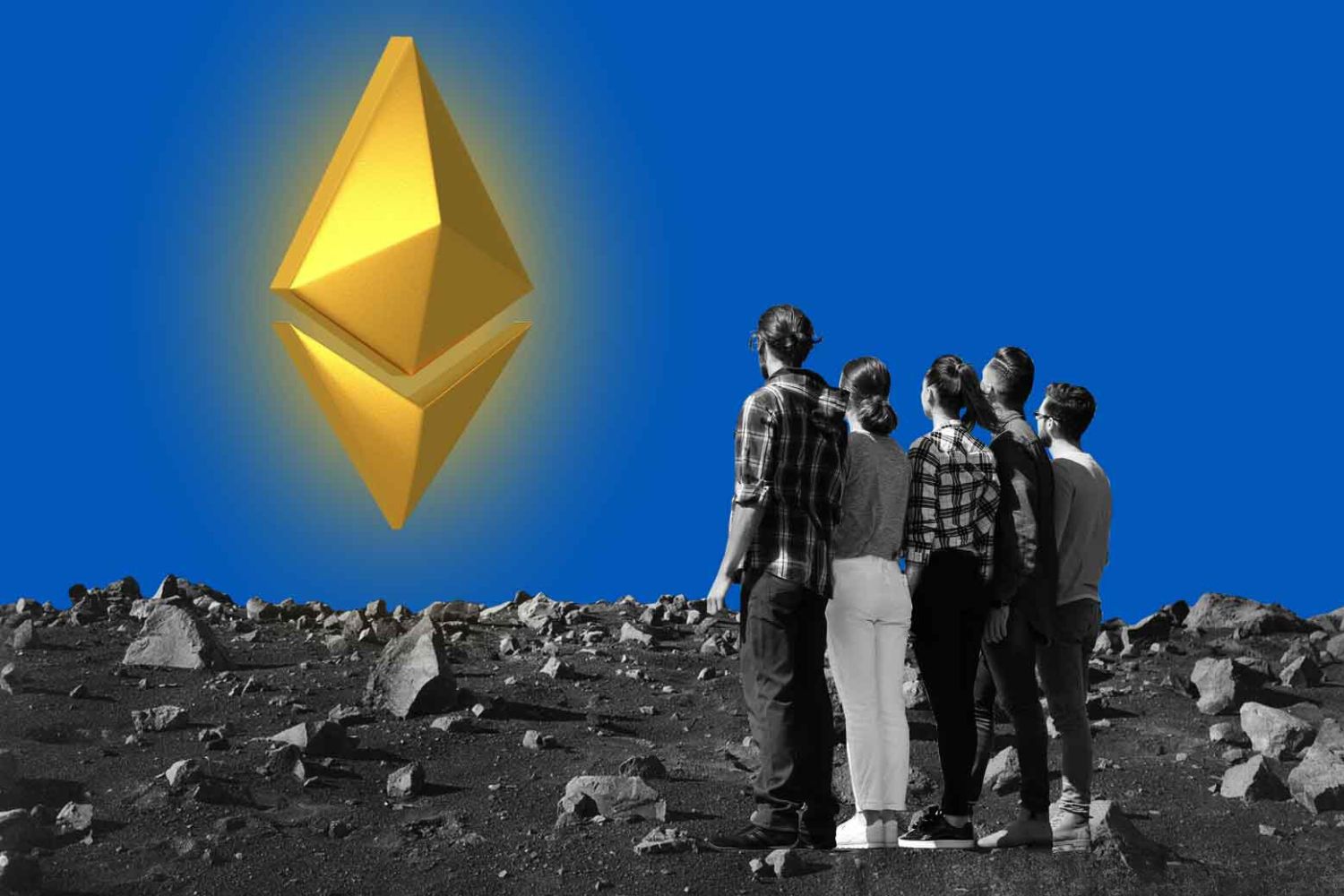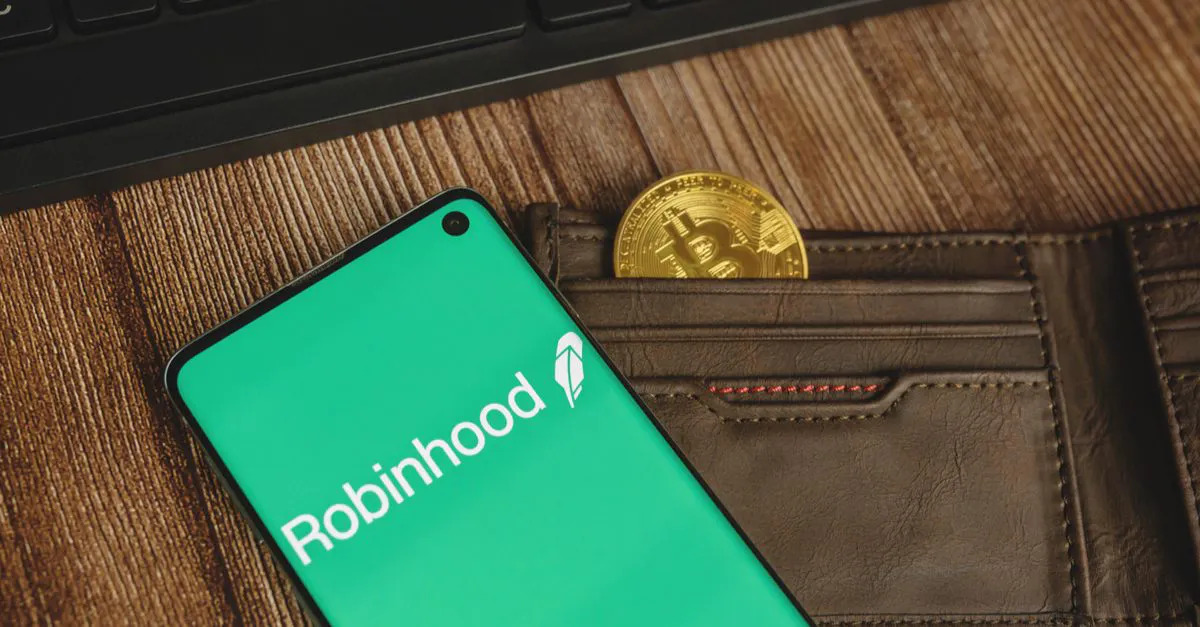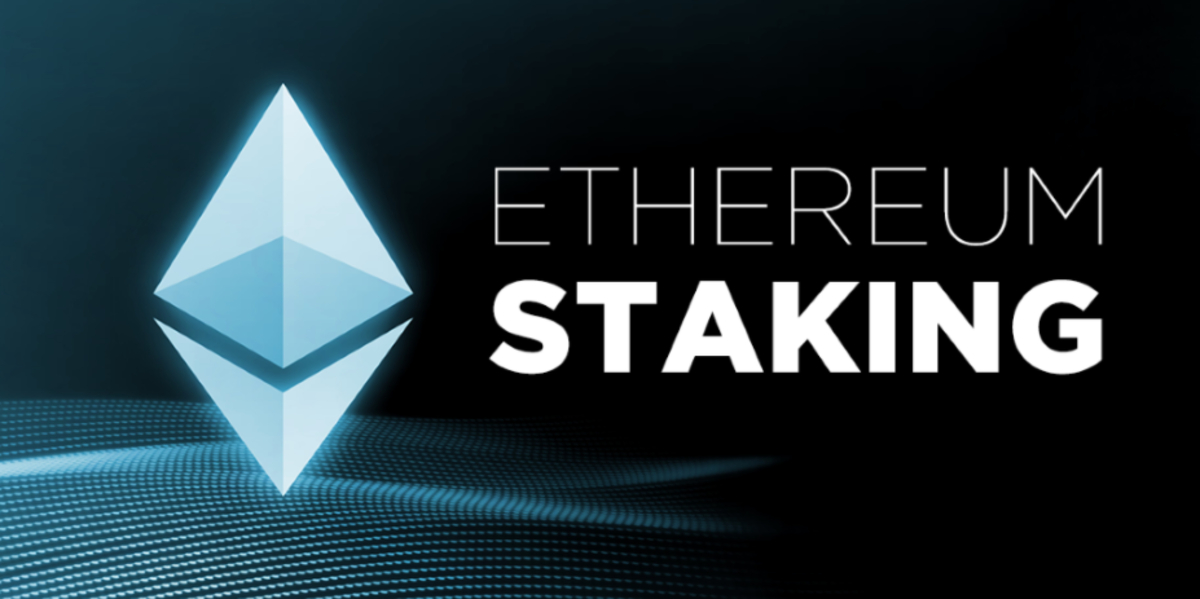Introduction
Welcome to the world of Ethereum Classic (ETC), a decentralized open-source blockchain platform that operates similarly to its sister network Ethereum (ETH). However, unlike Ethereum, Ethereum Classic maintains a commitment to preserving the original principles of blockchain technology, including immutability and decentralized governance.
ETC offers numerous opportunities for individuals to not only invest in the cryptocurrency but also earn it through various means. In this article, we will explore different strategies and methods to help you earn Ethereum Classic.
Whether you are a crypto enthusiast looking to diversify your digital asset portfolio or a tech-savvy individual interested in the possibilities of blockchain technology, ETC presents a compelling platform to explore and potentially earn rewards.
Before we dive into the various ways to earn Ethereum Classic, let’s take a closer look at what ETC is and what sets it apart.
What is Ethereum Classic?
Ethereum Classic is a decentralized blockchain platform that was created as a result of a hard fork from the original Ethereum network in 2016. The hard fork occurred after a controversial decision was made to reverse the transactions of a famous hack that resulted in the loss of millions of dollars’ worth of cryptocurrency.
Ethereum Classic emerged as a separate blockchain, upholding the principle of immutability and preserving the history of the original chain. It functions as a decentralized platform for running smart contracts and building decentralized applications (DApps).
ETC uses a virtual machine called the Ethereum Virtual Machine (EVM) to execute smart contracts, making it compatible with various programming languages and allowing developers to build complex and innovative applications.
Now that we have a baseline understanding of what Ethereum Classic is, let’s explore the different methods you can utilize to earn ETC.
What is Ethereum Classic?
Ethereum Classic (ETC) is a decentralized blockchain platform that originated as a result of a contentious hard fork from the original Ethereum network in 2016. The hard fork was prompted by a significant hack that resulted in the loss of millions of dollars in cryptocurrency.
Unlike its counterpart, Ethereum Classic upholds the principle of immutability, meaning that once a transaction is recorded on its blockchain, it cannot be altered or reversed. This commitment to preserving the original blockchain is a key differentiator between Ethereum Classic and Ethereum.
ETC operates as an open-source platform that allows developers to build and deploy smart contracts and decentralized applications (DApps). It utilizes the Ethereum Virtual Machine (EVM), a runtime environment that executes smart contracts written in various programming languages.
One of the defining characteristics of Ethereum Classic is its decentralized governance model. Instead of relying on a central authority or a small group of individuals to make decisions, ETC relies on a community-driven process. This ensures that the platform remains true to the principles of decentralization and prevents any single entity from having excessive control over the network.
With Ethereum Classic, users have the opportunity to participate in building a decentralized ecosystem that promotes transparency, security, and censorship resistance. By leveraging the power of blockchain technology, ETC offers a wide range of potential applications, including finance, gaming, supply chain management, and more.
It’s important to note that Ethereum Classic and Ethereum are separate networks with their own native cryptocurrencies, ETC and ETH, respectively. Although they have a similar foundation, they have evolved independently since the hard fork.
Whether you are a developer, investor, or simply interested in the possibilities of blockchain technology, Ethereum Classic provides a platform for innovation and value creation. In the following sections, we will explore various methods through which you can earn and participate in the Ethereum Classic ecosystem.
How to Buy Ethereum Classic
If you’re interested in acquiring Ethereum Classic (ETC), there are several steps you can take to buy this digital asset. Here’s a guide on how to buy Ethereum Classic:
1. Set Up a Digital Wallet
The first step in buying Ethereum Classic is to set up a digital wallet. This wallet will serve as a secure storage space for your ETC tokens. You can choose from a variety of wallet options, including software wallets, hardware wallets, and online wallets. Make sure to choose a wallet that is compatible with Ethereum Classic.
2. Choose an Exchange
Once you have set up your digital wallet, you’ll need to find a reputable cryptocurrency exchange that supports Ethereum Classic. Some popular exchanges that offer ETC trading include Binance, Kraken, and Coinbase. Research and compare the fees, security measures, and user experience of different exchanges before making a decision.
3. Create an Account
After selecting an exchange, you’ll need to create an account. This typically involves providing personal information, such as your name, email address, and sometimes even undergoing a verification process. Follow the exchange’s instructions to complete the account creation process.
4. Deposit Funds
Once your account is set up, you’ll need to deposit funds into your exchange account. This can usually be done through bank transfers, credit/debit cards, or other supported payment methods. Be aware that each exchange may have different deposit options and fees, so double-check before proceeding.
5. Place an Order
With funds in your exchange account, you can now place an order to buy Ethereum Classic. Select the ETC trading pair (such as ETC/USD or ETC/BTC) and specify the amount of ETC you want to purchase. You can either place a market order, which buys at the current market price, or a limit order, which specifies the price you are willing to pay.
6. Secure Your ETC
Once your order is executed and you have acquired Ethereum Classic, it’s crucial to transfer the ETC from the exchange to your digital wallet. This step ensures that you have full control over your funds and reduces the risk of loss due to exchange vulnerabilities or hacking incidents. Follow the instructions provided by your wallet to initiate the transfer.
Remember to practice good security measures, such as enabling two-factor authentication and keeping your wallet’s private keys safe. It’s also advisable to regularly update your wallet software to protect against potential vulnerabilities.
By following these steps, you can successfully buy Ethereum Classic and start participating in the ETC ecosystem. In the next sections, we will explore additional ways to earn Ethereum Classic, beyond simply buying it.
Mining Ethereum Classic
Mining is one of the traditional methods of earning Ethereum Classic (ETC) and contributing to the security and functionality of the network. Mining involves using computational power to solve complex mathematical problems and validate transactions on the blockchain.
1. Understanding Proof-of-Work (PoW)
Ethereum Classic, like many other cryptocurrencies, operates on a consensus mechanism called Proof-of-Work (PoW). In the PoW system, miners compete to find a solution to a cryptographic puzzle. The first miner to solve the puzzle adds a new block to the blockchain and receives a reward in ETC as an incentive for their work.
2. Setting Up Mining Hardware
To mine Ethereum Classic, you will need specialized mining hardware, such as Graphics Processing Units (GPUs) or Application-Specific Integrated Circuits (ASICs). These devices are designed to perform the complex computations required for mining more efficiently than regular CPUs.
3. Joining a Mining Pool
While mining individually is possible, it’s often more profitable to join a mining pool. A mining pool combines the computational power of several miners, increasing the chances of finding blocks and earning rewards. When a block is successfully mined, the rewards are distributed among the pool members based on their contributed computing power.
4. Installing Mining Software
Once you have set up your mining hardware and joined a mining pool, you will need to install mining software on your computer. This software connects you to the mining pool and allows you to contribute your computational power to the network. Popular mining software for Ethereum Classic includes Geth, Claymore, and PhoenixMiner.
5. Managing Energy Costs
Mining Ethereum Classic consumes a significant amount of electricity, so it’s essential to consider the energy costs and efficiency of your mining operations. Optimize your mining setup by ensuring proper cooling, using energy-efficient hardware, and exploring renewable energy sources if possible.
6. Rewards and Payouts
As a miner, your earnings will consist of block rewards as well as transaction fees associated with the transactions within the blocks you mine. These rewards are typically paid out in ETC. Keep in mind that the mining process can be competitive, and the rewards may vary depending on the difficulty of mining and the number of active miners on the network.
Joining mining communities and staying up-to-date with mining-related forums and discussions can provide valuable insights and help you optimize your mining operations for higher profitability.
Mining Ethereum Classic can be a rewarding endeavor for those with the necessary resources and technical knowledge. However, it’s important to be aware of the associated costs, including hardware investments and energy consumption. In the following sections, we will explore alternative methods to earn Ethereum Classic, including staking, participating in decentralized applications (DApps), and more.
Staking Ethereum Classic
Staking Ethereum Classic (ETC) is an alternative method to earn rewards and contribute to the security and governance of the network. Staking involves holding a certain amount of ETC in a digital wallet and participating in network consensus by validating and securing transactions.
1. Understanding Proof-of-Stake (PoS)
Ethereum Classic is in the process of transitioning from a Proof-of-Work (PoW) consensus mechanism to a Proof-of-Stake (PoS) mechanism. In a PoS system, validators are chosen to create new blocks and secure the network based on the number of ETC they hold and “stake” as collateral.
2. Setting Up a Staking Wallet
To stake Ethereum Classic, you will need to set up a staking wallet that supports ETC and the specific PoS protocol being used. There are various Ethereum Classic staking wallets available, such as MyEtherWallet, MetaMask, and Trust Wallet. Choose a reputable wallet and follow the instructions to create a staking account.
3. Depositing ETC and Initiating Staking
Once your staking wallet is set up, deposit the desired amount of ETC into the wallet. This amount will determine your staking power and the potential rewards you can earn. Follow the wallet’s instructions to initiate the staking process, which typically involves selecting the staking option and confirming your intent to stake.
4. Participating in Network Consensus
As a staker, you are responsible for validating and securing transactions on the Ethereum Classic network. Validators are randomly chosen based on their staked ETC, and they take turns proposing and verifying blocks. By participating actively in the network consensus, you contribute to its security and earn rewards in the form of additional ETC.
5. Earning Staking Rewards
The rewards for staking Ethereum Classic vary depending on various factors, including the number of ETC staked, the length of time staked, and the overall network participation. Generally, stakers receive a portion of the transaction fees and block rewards as their rewards. These rewards are typically distributed periodically to the staking wallets.
6. Managing Staking Risks
While staking Ethereum Classic offers the opportunity to earn rewards, it’s essential to be aware of the associated risks. Stakers must remain vigilant to maintain the security of their staking wallets and avoid any potential vulnerabilities. Regularly update your staking software and be cautious of phishing attempts or unauthorized access to your staking account.
By staking Ethereum Classic, you actively participate in securing and governing the network while earning rewards. Keep in mind that the staking process may have specific requirements and considerations, so it’s important to stay informed and follow best practices to maximize your staking experience.
In the following sections, we will explore further methods to earn Ethereum Classic, including participating in Decentralized Applications (DApps), accepting ETC as payment, and investing in ETC.
Participating in Decentralized Applications (DApps)
Decentralized Applications (DApps) are one of the most exciting aspects of blockchain technology, and Ethereum Classic (ETC) provides a platform for developers to build and deploy these innovative applications. By participating in DApps built on the ETC network, you can not only engage with new digital experiences but also potentially earn Ethereum Classic as rewards.
1. Understanding DApps
DApps are decentralized applications that run on a blockchain network, eliminating the need for intermediaries and centralized control. These applications range from decentralized finance (DeFi) platforms and gaming applications to social networks and supply chain solutions. Ethereum Classic provides a robust infrastructure for DApp development, allowing for the creation of various decentralized applications.
2. Exploring DApp Marketplaces
To participate in DApps, you can explore DApp marketplaces and platforms that showcase a wide range of applications built on the Ethereum Classic network. Some popular marketplaces include State of the DApps, Dapp.com, and DappRadar. These platforms provide user-friendly interfaces and categorize DApps based on their functionality and popularity.
3. Utilizing DApps and Earning Rewards
When using certain DApps, you may have the opportunity to earn rewards in the form of Ethereum Classic. For example, in decentralized finance (DeFi) DApps, you can lend your ETC to earn interest or participate in staking pools to earn staking rewards. Other DApps may offer rewards for participating in specific activities, such as playing games, completing tasks, or providing valuable contributions to the platform.
4. Following DApp Communities
By participating in DApp communities, such as forums, social media groups, and developer communities, you can stay up-to-date with the latest updates, news, and potential earning opportunities. These communities often provide insights into upcoming airdrops, bounty programs, or other initiatives that can help you earn Ethereum Classic.
5. Evaluating DApp Security
When participating in DApps, it’s essential to exercise caution and evaluate the security of the application. Verify if the DApp has undergone audits, has a transparent development team, and has a track record of security practices. Additionally, only interact with DApps through trusted wallets or platforms to minimize the risks associated with phishing or fraudulent applications.
Participating in decentralized applications not only offers an immersive experience but also enables you to earn Ethereum Classic through various avenues. Explore the diverse range of DApps available on the Ethereum Classic network, engage with the communities, and be a part of the growing decentralized ecosystem.
In the forthcoming sections, we will explore additional methods to earn Ethereum Classic, including accepting ETC as payment and investing in the cryptocurrency.
Accepting Ethereum Classic as Payment
In addition to buying and earning Ethereum Classic (ETC), another way to accumulate this digital asset is by accepting it as a form of payment. By integrating Ethereum Classic payment options into your business or ventures, you can attract a wider customer base, tap into the benefits of blockchain technology, and accumulate ETC tokens.
1. Integrate ETC Payment Gateways
To start accepting Ethereum Classic payments, you can integrate ETC payment gateways into your website or online store. ETC payment gateways facilitate the seamless processing of ETC transactions by providing secure payment solutions for your customers.
2. Use ETC Wallets and QR Codes
Set up an Ethereum Classic wallet to receive and store ETC tokens. Share your wallet address or generate unique QR codes for customers to scan and send payments directly. This method is particularly useful for in-person transactions.
3. Display Accepted Payment Method
Broadcast that you accept Ethereum Classic as a payment method by prominently displaying it on your website, e-commerce store, or physical location. This helps inform potential customers that they have the option to pay with ETC.
4. Promote ETC Payment Acceptance
Take advantage of social media platforms, email newsletters, and other marketing channels to spread the word about your acceptance of Ethereum Classic. Highlight the benefits of using ETC, such as lower transaction fees, faster settlements, and increased privacy.
5. Collaborate with ETC Community
Engage with the Ethereum Classic community to raise awareness of your acceptance of ETC as payment. Connect with ETC enthusiasts, attend meetups or conferences, and explore partnerships with other businesses in the ETC ecosystem. Collaborations can help drive more ETC-holding customers to your platform.
6. Convert ETC to Fiat or Other Cryptocurrencies
If desired, you have the option to convert your received ETC payments into fiat currencies or other cryptocurrencies. Utilize cryptocurrency exchanges that support ETC trading to liquidate your ETC holdings as needed.
By accepting Ethereum Classic as payment, you expand your potential customer base and align your business with the benefits of blockchain technology. ETC transactions are secure, transparent, and provide an alternative to traditional payment methods.
As the adoption of cryptocurrencies continues to grow, accepting Ethereum Classic as payment can position your business at the forefront of this digital revolution.
Next, we will explore the option to invest in Ethereum Classic and potentially earn ETC through investment strategies.
Investing in Ethereum Classic
Investing in Ethereum Classic (ETC) can be a strategic way to potentially earn profit and participate in the growth of the Ethereum Classic ecosystem. As with any investment, it’s important to consider the risks and do thorough research before making investment decisions. Here are some factors to consider when investing in Ethereum Classic:
1. Understanding the Project
Before investing in Ethereum Classic, familiarize yourself with the project’s mission, technology, and roadmap. Research the team behind Ethereum Classic and stay updated on their development progress and future plans. Understanding the fundamentals of the project can help you make informed investment decisions.
2. Analyzing Market Trends
Keep an eye on the market trends and dynamics surrounding Ethereum Classic. Monitor the price movements, trading volumes, and market sentiment to gain insights into the potential demand for ETC. Consider using technical analysis or consulting with financial experts to supplement your decision-making process.
3. Diversifying Your Portfolio
As with any investment strategy, diversification is key. Consider allocating a portion of your investment portfolio to Ethereum Classic along with other cryptocurrencies, stocks, and assets. By diversifying, you can minimize the risks associated with any single investment and optimize potential returns.
4. Holding Long-term
Ethereum Classic has shown resilience and longevity since its inception. If you believe in the long-term potential of the project and expect sustained growth, consider holding your ETC investment for an extended period. Holding long-term can help you ride out short-term market fluctuations and potentially capitalize on future price appreciation.
5. Staking ETC for Passive Income
Another approach to earning through your ETC investment is by staking your tokens. By staking, you can contribute to the security of the network and earn additional ETC as rewards. Research the staking options available for Ethereum Classic and evaluate the potential returns and risks involved in staking.
6. Staying Informed
Stay updated with the latest news, developments, and updates related to Ethereum Classic. Follow the official Ethereum Classic channels, join relevant communities, and keep an eye on reliable cryptocurrency news sources. Staying informed allows you to make informed decisions and adjust your investment strategy accordingly.
When investing in Ethereum Classic, it’s crucial to exercise caution and only invest what you can afford to lose. The cryptocurrency market is highly volatile, and prices can fluctuate rapidly. Conduct thorough research, assess your risk tolerance, and seek advice from financial professionals if needed.
By carefully considering these factors and applying a disciplined approach to investing, you can potentially benefit from the growth and opportunities offered by Ethereum Classic.
In the next section, we will explore additional methods to earn Ethereum Classic through airdrops and bounty programs.
Earning Ethereum Classic through Airdrops and Bounty Programs
Ethereum Classic (ETC) presents the opportunity to earn additional tokens through airdrops and bounty programs. These initiatives are designed to reward participants for completing specific tasks or contributing to the improvement of the Ethereum Classic ecosystem. Let’s explore these methods of earning ETC:
1. Airdrops
Airdrops involve the distribution of free ETC tokens to eligible participants. Airdrops can be organized by the Ethereum Classic development team, projects built on the ETC network, or as a result of hard forks or network upgrades. To participate in an airdrop, you usually need to meet certain criteria, such as holding a minimum amount of ETC or fulfilling specific requirements set by the organizers.
2. Bounty Programs
Bounty programs incentivize users to contribute to the Ethereum Classic ecosystem by completing specific tasks or finding and reporting vulnerabilities. Projects may offer bounties for tasks such as developing applications, writing code, creating educational content, or finding bugs in their software. Participants can earn ETC as a reward for their contributions, depending on the difficulty and importance of the task.
3. Participating in Development
If you have development skills or technical expertise, you can actively contribute to the improvement of Ethereum Classic by participating in its open-source development. By submitting code improvements, bug fixes, or proposing enhancements, you can earn ETC as a form of recognition for your contributions. Joining the Ethereum Classic developer community and collaborating with the core development team can provide opportunities for involvement and earning.
4. Staying Updated on ETC Projects
Stay informed about the projects and initiatives being developed on the Ethereum Classic platform. Many projects conduct airdrops or offer bounties to promote adoption and encourage community participation in their ecosystem. Monitor official ETC channels, developer forums, and social media to stay updated on the latest news and opportunities for earning ETC through these projects.
5. Engaging with the ETC Community
Engage with the Ethereum Classic community by actively participating in discussions, forums, and social media groups. Interact with other community members, contribute valuable insights, and share your ideas. By establishing yourself as an active and knowledgeable member of the community, you may have the opportunity to be rewarded with ETC for your contributions.
Earning Ethereum Classic through airdrops and bounty programs requires proactive involvement and engagement with the Ethereum Classic ecosystem. Stay updated with the latest announcements and opportunities, showcase your skills and expertise, and actively contribute to the growth and development of Ethereum Classic.
In the following section, we will explore another method to earn Ethereum Classic by participating in Ethereum Classic hackathons.
Participating in Ethereum Classic Hackathons
Ethereum Classic (ETC) hackathons offer an exciting opportunity for developers, enthusiasts, and innovators to showcase their skills and creativity while earning rewards in the form of Ethereum Classic. These events bring together talented individuals who collaborate, ideate, and build innovative decentralized applications (DApps) or projects on the Ethereum Classic blockchain. Let’s explore the benefits and ways to participate in Ethereum Classic hackathons:
1. Collaborative Environment
Ethereum Classic hackathons provide a collaborative environment where participants work together and learn from each other. They often foster creativity, problem-solving, and the exchange of ideas. Engaging in hackathons allows participants to gain new insights, build meaningful connections, and contribute to the Ethereum Classic ecosystem.
2. Project Development
During the hackathon, participants work on developing innovative projects or DApps using the Ethereum Classic blockchain. These projects can cover various sectors such as finance, supply chain, gaming, social networks, and more. By participating, you have the opportunity to create real-world applications and contribute to the growth and adoption of Ethereum Classic.
3. Mentorship and Guidance
Ethereum Classic hackathons often involve mentors and industry experts who provide guidance, support, and feedback to participants. These mentors can offer valuable insights, help resolve technical challenges, and guide you in building high-quality projects. The mentorship aspect of hackathons can accelerate your learning and enable you to develop top-notch solutions.
4. Recognition and Rewards
Ethereum Classic hackathons typically offer rewards and prizes for participants who create outstanding projects or achieve specific milestones. These rewards can include Ethereum Classic tokens, funding opportunities, or even the chance to collaborate with industry-leading organizations. Winning a hackathon not only earns you rewards but also enhances your reputation and credibility in the blockchain and Ethereum Classic community.
5. Learning Opportunities
Hackathons provide a fantastic learning experience, allowing participants to gain hands-on experience with blockchain technology, smart contracts, and decentralized applications. You can acquire new technical skills, explore innovative solutions, and broaden your knowledge base during the hackathon. Take advantage of the workshops, seminars, and resources provided during the event to expand your expertise.
6. Community Engagement
Ethereum Classic hackathons bring together like-minded individuals who share a passion for blockchain and decentralized technologies. Engaging with the community at these events allows you to network, exchange ideas, and form connections with potential collaborators, mentors, and industry professionals. The relationships built during hackathons can lead to future collaborations and career opportunities.
Participating in Ethereum Classic hackathons is an excellent way to showcase your abilities, contribute to the Ethereum Classic ecosystem, and potentially earn rewards. Keep an eye out for upcoming hackathons, join developer communities, and get involved in these exciting events to harness your skills and leave a lasting impact on the Ethereum Classic community.
In the next section, we will wrap up the article by summarizing the various methods to earn Ethereum Classic and the potential benefits of each approach.
Conclusion
Ethereum Classic (ETC) offers a multitude of opportunities for individuals to earn and participate in its decentralized ecosystem. Whether you are a developer, investor, or simply interested in blockchain technology, there are several methods available to accumulate ETC tokens.
Buying Ethereum Classic through reputable cryptocurrency exchanges allows you to acquire ETC directly. By setting up a digital wallet and integrating ETC payment gateways, you can accept ETC as a form of payment, opening doors to a wider consumer base and embracing the benefits of blockchain transactions.
For those with technical expertise, mining Ethereum Classic provides an opportunity to contribute to the network’s security and earn rewards through the proof-of-work consensus mechanism. Alternatively, staking ETC allows you to validate transactions and secure the network while earning passive income through the proof-of-stake consensus model.
Ethereum Classic is also a platform for decentralized applications (DApps). By participating in DApps and engaging with the vibrant Ethereum Classic community, you can earn ETC, unlock unique experiences, and contribute to the development of the ecosystem.
In addition, ETC enthusiasts can explore opportunities through airdrops and bounty programs, where free tokens are distributed or rewards are given for contributions to the Ethereum Classic network or specific projects. Participating in Ethereum Classic hackathons further enables developers and innovators to showcase their skills, build projects, and earn recognition and rewards.
It is essential to approach ETC investment and participation with research, caution, and an understanding of the risks involved in the volatile cryptocurrency market. Diversifying your investment portfolio and staying informed about market trends can help maximize the potential returns from your ETC holdings.
As Ethereum Classic continues to evolve and its ecosystem expands, the potential for earning ETC remains dynamic and promising. By exploring the various methods outlined in this article, you can actively engage with the Ethereum Classic network, contribute to its growth, and potentially reap rewards.
So, whether you choose to buy, earn, stake, develop, or participate in ETC-related activities, Ethereum Classic opens doors to novel experiences, the potential for financial gains, and the satisfaction of being a part of a decentralized revolution.







